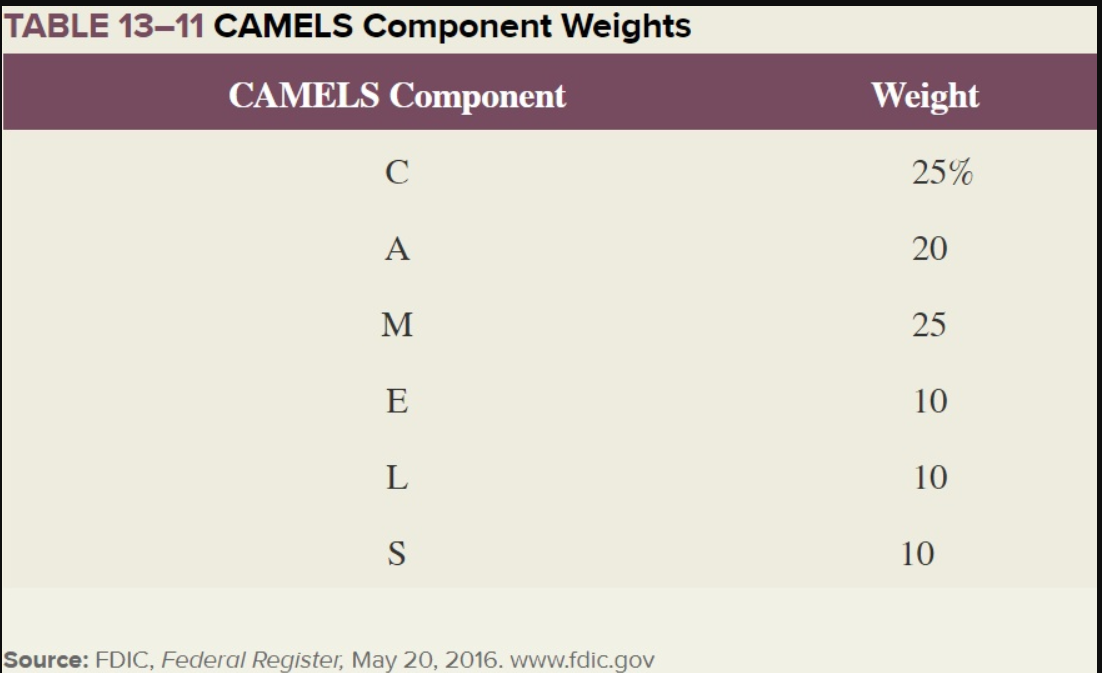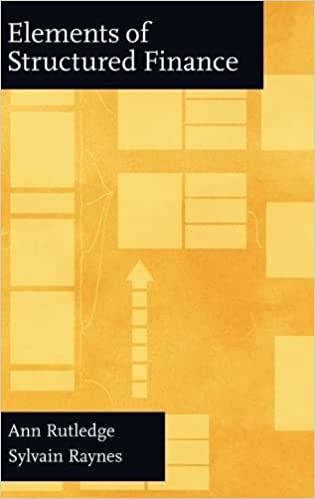Answered step by step
Verified Expert Solution
Question
1 Approved Answer
Two depository institutions have composite CAMELS ratings of 1 or 2 and are well-capitalized. Thus, each institution falls into the FDIC Risk Category I deposit
Two depository institutions have composite CAMELS ratings of 1 or 2 and are "well-capitalized." Thus, each institution falls into the FDIC Risk Category I deposit insurance assessment scheme. Further, the institutions have the following financial ratios and CAMELS ratings: Use Table 13-11
| Institution A | Institution B | |||||
| Tier I leverage ratio (%) | 8.80 | 7.93 | ||||
| Net income before taxes/risk-weighted assets (%) | 2.33 | 1.95 | ||||
| Nonperforming loans and leases/gross assets (%) | 0.53 | 0.68 | ||||
| Other real estate owned/gross assets (%) | 0.15 | 0.45 | ||||
| Brokered deposits/total assets (%) | 3.75 | 1.05 | ||||
| One year asset growth | 7.35 | 4.65 | ||||
| Loans as a Percentage of Total Assets: | ||||||
| Construction & Development | 0.00 | 0.00 | ||||
| Commercial & Industrial | 18.36 | 11.40 | ||||
| Leases | 2.05 | 1.75 | ||||
| Other Consumer | 18.85 | 18.55 | ||||
| Loans to Foreign Government | 0.30 | 0.30 | ||||
| Real Estate Loans Residual | 0.00 | 0.00 | ||||
| Multifamily Residential | 0.95 | 0.65 | ||||
| Nonfarm Nonresidential | 0.00 | 0.00 | ||||
| 14 Family Residential | 38.40 | 36.34 | ||||
| Loans to Depository Banks | 2.70 | 0.95 | ||||
| Agricultural Real Estate | 1.30 | 4.05 | ||||
| Agricultural | 0.40 | 7.20 | ||||
| CAMELS components: | ||||||
| C | 2 | 2 | ||||
| A | 2 | 3 | ||||
| M | 1 | 2 | ||||
| E | 2 | 2 | ||||
| L | 1 | 3 | ||||
| S | 2 | 1 |
| |||
The DIF reserve ratio is currently 1.30 percent. Calculate the initial deposit insurance assessment rate for each institution. (Do not round intermediate calculations. Round your answers to 2 decimal places. (e.g., 32.161))
Institution A= ? Insititution B=?

Step by Step Solution
There are 3 Steps involved in it
Step: 1

Get Instant Access to Expert-Tailored Solutions
See step-by-step solutions with expert insights and AI powered tools for academic success
Step: 2

Step: 3

Ace Your Homework with AI
Get the answers you need in no time with our AI-driven, step-by-step assistance
Get Started


